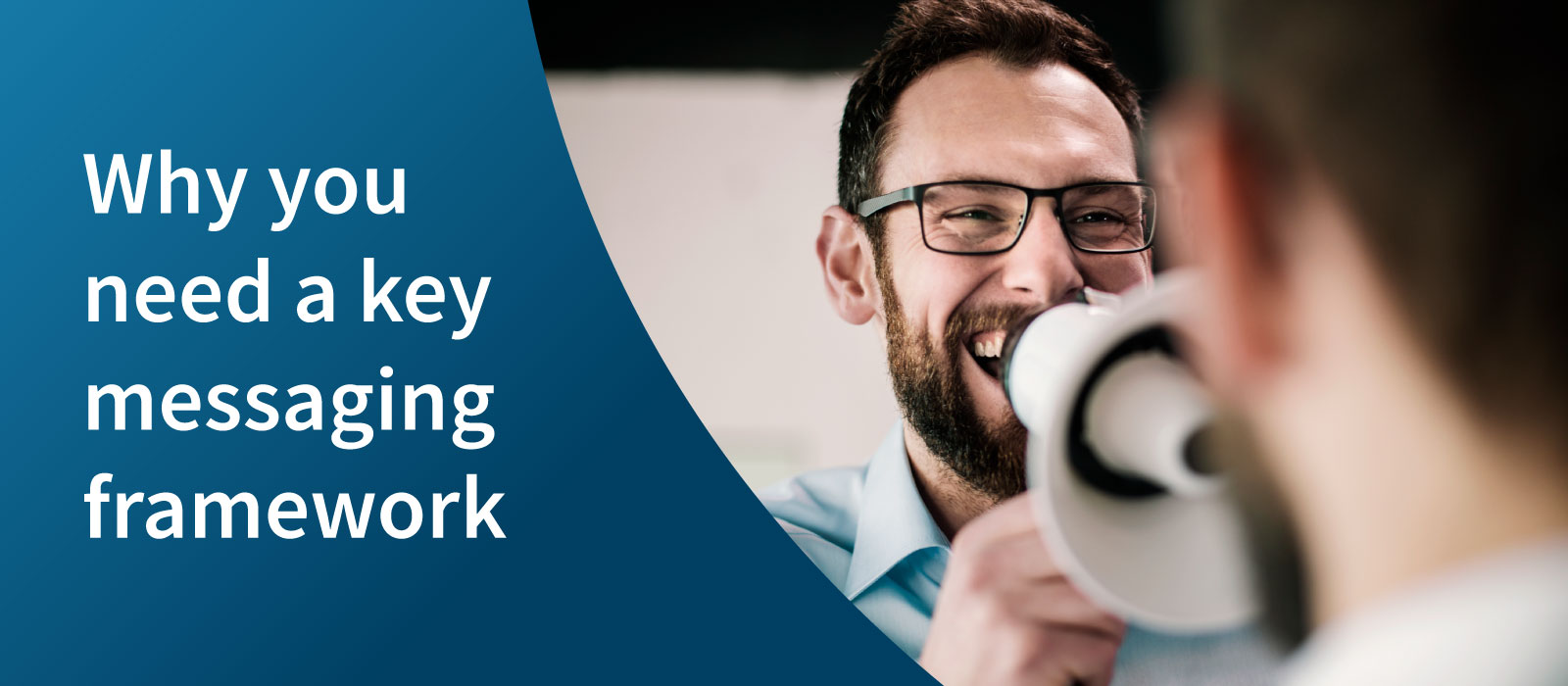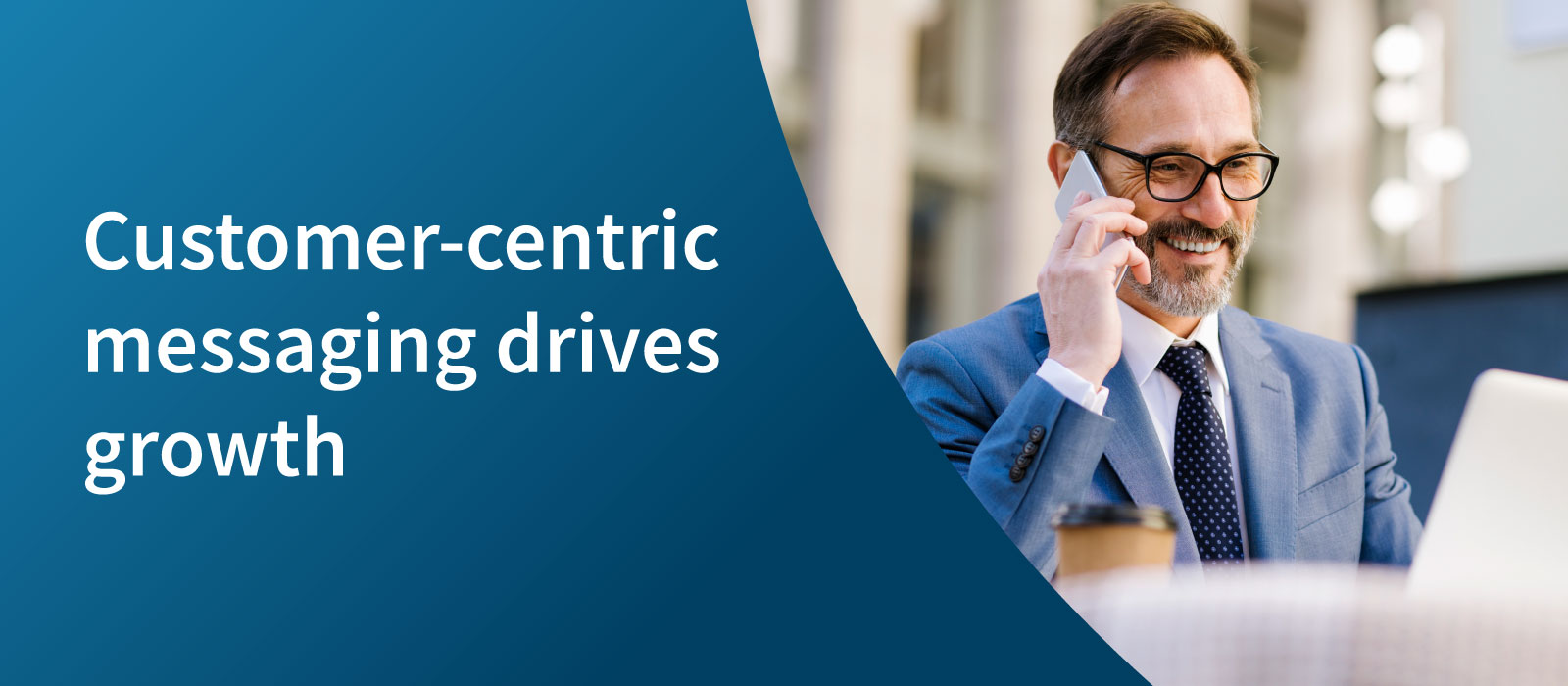Why you need a key messaging framework

Many sales professionals struggle to move beyond pitching their products or services to providing solutions that are connected to customer business outcomes. And, those who do have value-based conversations aren’t always aligned with the key marketing messages that their organisation’s marketing experts have developed.
In fact, there’s often a large disconnect between how various organisational teams speak about their products and solutions. It’s not unusual for business-to-business (B2B) brands to communicate in multiple, haphazard ways. This is often because a clear value proposition has not been articulated, leaving everyone in your organisation, from sales executives to the chief executive officer (CEO), to formulate their own messages and narratives which can muddy the waters. The result is that prospective customers are left unsure about what your business is selling, the value you offer them, and why they should care.
This issue is far from insignificant. As your business expands, so do your product, sales and marketing teams, leading to a rapidly growing challenge. The answer for many B2B organisations is to create a comprehensive key messaging framework.
Effectively conveying a unique value proposition is a vital marketing task for any company, both internally and externally, and this is exactly what a key message framework does.
It’s the golden thread that connects your target audience and content strategy, neatly summarises your brand’s distinct value, sets you apart from competitors, and outlines the tailored messages for each value pillar you identify in various scenarios, all in one concise document.
The need for customer-centric content and brand messaging

Your key message framework forms the backbone of all sales and marketing communications. It prioritises your customers’ needs, guaranteeing they consistently receive messages that resonate with them. At the same time–and equally as important–it maintains a cohesive brand story, regardless of how many product areas and regions your business ventures into.
Adopting this mindset might feel surprising for B2B organisations in their growth phase. You’ve been concentrating on aggressive selling through product-centric messaging, which has been successful so far, so why switch? The simple answer is that, as your business grows and your products are applied in different industries, product-led content is going to start limiting your growth. To gain traction, you’re going to need customer-centric brand messaging and supporting content.
Aligning sales and marketing through core brand messaging

Both marketing and sales can only gain a complete picture of their customers and understand the messaging that resonates with them when they are aligned. The problem is that only 31 per cent of marketers [1] claim their sales and marketing teams are well-aligned, which causes issues for everyone and particularly marketers, as one in five [2] marketers say sharing and accessing data across teams becomes more difficult when they aren’t aligned.
Unsurprisingly, a key messaging framework solves this problem too. Expertise exists across every organisation: research and development (R&D) teams understand customer pain points and why they have developed specific products or services to solve those challenges; sales teams understand their customers’ operating environment and challenges; and marketing teams understand how to articulate the message that customers need to hear and why their products are differentiated.
But, as we know, there is often a disconnect between these different departments which means their knowledge lives in silos. A key messaging framework draws on the insights and customer experiences of multiple teams and individuals, uncovering the knowledge and proof points that exist across the organisation and combining them to form one, powerful and above-all, unified message.
Sharing a value-based key message

At this point, you may be asking why one aligned key message is so important? Unfortunately, when your teams tackle the same audience with different approaches, things can get messy. If your teams aren’t on the same page, your customers might end up in a whirlwind of mixed messages, wondering why your company isn’t more coordinated and how your business actually differs from your competitors. Best case, your message will get lost in the mix. Worst case, your potential customers will commoditise you and assume you are exactly like your competitors.
Once that happens, every sale comes down to price, which is exactly where a complex solutions provider does not want to be. You want to be discussing value, and to do that, you need to be a thought leader.
That’s where a key messaging framework steps in, keeping your stories straight and ensuring a smooth ride for customers throughout their buying journey.
This level of clarity and relevance is a total game-changer. Not only will it boost your searchability, but your audience will clearly see the relevance of your solutions within their operating environments. They’ll instantly recognise your brand’s authority and know precisely what you bring to the table.
How to create a B2B key messaging framework

Successful messages are all about context: understanding your customer’s pain points to show them how your solution will map to their challenges and function within their business and industry. Your message strategy must take this into account.
The goal of any messaging strategy is also to ensure that your intended audience encounters the perfect content at just the right moment in their buying journey. To achieve this, you must anticipate their needs and tailor your messaging to match. Every business is different, and so the end product of a B2B key messaging framework will differ, but there are four essential steps that are important to follow when creating a framework of your own.
Step 1: Bring your stakeholders together in one room (physically or virtually)
This may require one workshop or multiple workshops, but the goal is to speak to everyone who plays a key role in your customer’s lives. To run a successful workshop:
- identify and ensure all key stakeholders are invited
- create an agenda and stick to it
- plan ahead and draft the questions you need answered
- make sure you know what your objectives are and the information you need
- keep on topic and make sure all your questions are answered.
Step 2: Identify your key value pillars and differentiators
This workshop should uncover:
- who your ideal customer is (and is not)
- their key pain points
- how your solution solves those pain points
- why your customer should select you and not your competitor
- your key value pillars
- how your solution is viewed in the market.
Step 3: Create your key message framework
Now it’s time to combine your discoveries and the different messages that your various teams use to create one unified message framework. Ensure your framework:
- is consistent
- speaks to the key messages your various teams believe are important
- is customer-centric (your customer is the hero here)
- aligns to your solution.
Step 4: Go to market
Once you have a consistent message that aligns sales and marketing, it’s time to go to market with content that defines who you are and the value of your solution, as well as speaks directly to your target audience and addresses their pain points.
To do this, ensure you:
- run all content past the messaging framework for consistency
- train your marketing and sales teams in the messaging
- encourage alignment and cross-departmental engagement.
As your business grows and your customers’ needs shift, or you add new solutions to your offerings, your sales and marketing strategy will change, and your messaging will need to adapt, too. This means your key messaging framework will require regular check-ins with your company’s customer-facing stakeholders and will need to be updated accordingly.
Developing a key messaging framework can be challenging, especially for B2B organisations that sell complex, high-value products and services. Working with a dedicated integrated public relations (PR) and marketing agency can help you break down information silos within your organisation and develop a key messaging framework that makes a difference for your sales and marketing teams.
Outsource – part of The Recognition Group, Australia’s leading group of PR and marketing specialists – helps organisations develop comprehensive brand messaging for their sales and marketing teams. For more information on how Outsource can help your business develop its key messaging framework through the Key Message Development Program, contact the team today.













